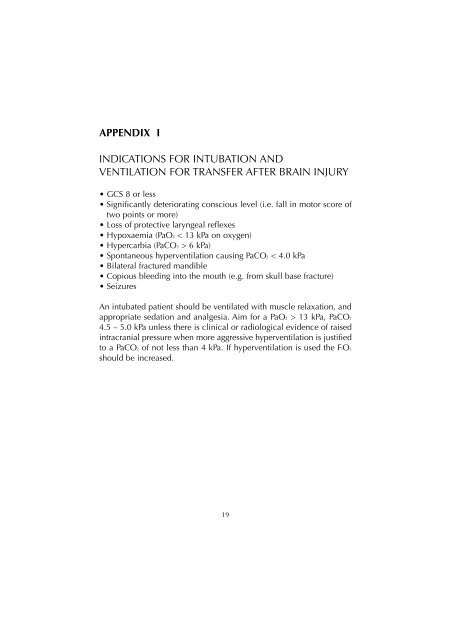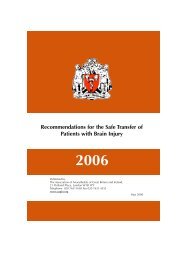TheatrePracticeStandardsGeneric1
You also want an ePaper? Increase the reach of your titles
YUMPU automatically turns print PDFs into web optimized ePapers that Google loves.
APPENDIX I<br />
INDICATIONS FOR INTUBATION AND<br />
VENTILATION FOR TRANSFER AFTER BRAIN INJURY<br />
• GCS 8 or less<br />
• Significantly deteriorating conscious level (i.e. fall in motor score of<br />
two points or more)<br />
• Loss of protective laryngeal reflexes<br />
• Hypoxaemia (PaO2 < 13 kPa on oxygen)<br />
• Hypercarbia (PaCO2 > 6 kPa)<br />
• Spontaneous hyperventilation causing PaCO2 < 4.0 kPa<br />
• Bilateral fractured mandible<br />
• Copious bleeding into the mouth (e.g. from skull base fracture)<br />
• Seizures<br />
An intubated patient should be ventilated with muscle relaxation, and<br />
appropriate sedation and analgesia. Aim for a PaO2 > 13 kPa, PaCO2<br />
4.5 – 5.0 kPa unless there is clinical or radiological evidence of raised<br />
intracranial pressure when more aggressive hyperventilation is justified<br />
to a PaCO2 of not less than 4 kPa. If hyperventilation is used the FIO2<br />
should be increased.<br />
19





